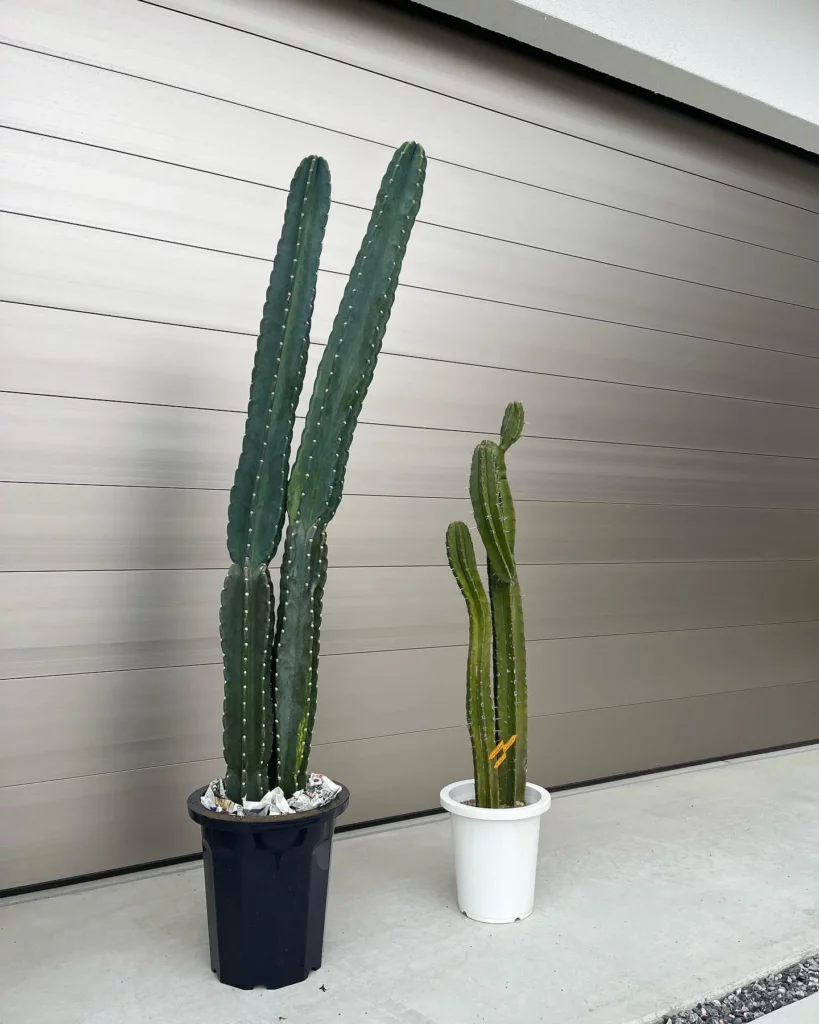The Sticks of Fire plant, also known as Euphorbia tirucalli ‘Sticks Of Fire’, is a visually striking succulent that is sure to catch the eye. With its thin branches resembling vibrant red or orange pencils, this plant adds a fiery touch to any space. As the plant matures, the base of the trunk develops a woody, bark-like texture, giving it an interesting and natural look.
Key Takeaways:
- The Sticks of Fire, scientifically known as Euphorbia tirucalli ‘Sticks Of Fire’, is a succulent plant native to Africa.
- This plant has thin branches that turn bright red in the fall and winter, giving it a fiery appearance.
- The Sticks of Fire plant requires full sun or bright light indoors to thrive.
- The Sticks of Fire plant can be easily propagated through stem cuttings or seed.
The Stunning Appearance of Sticks of Fire
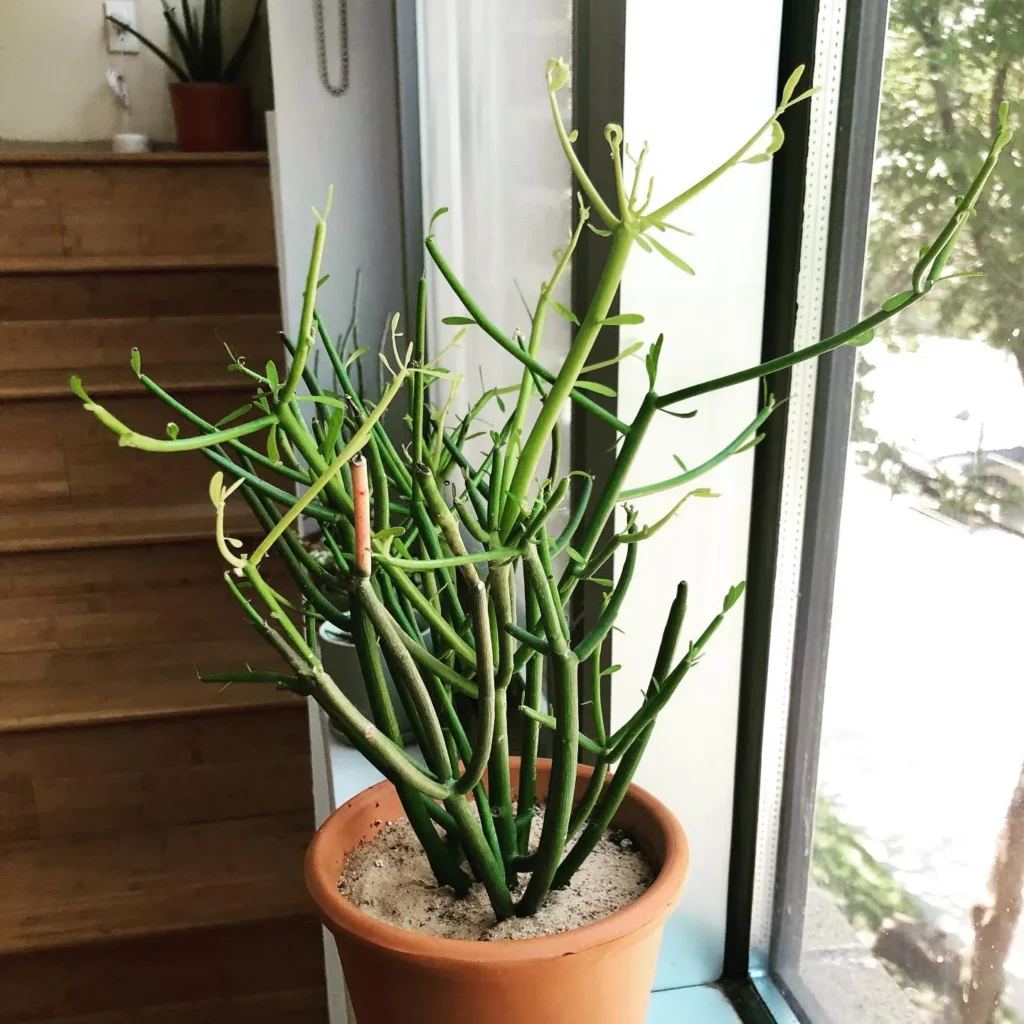
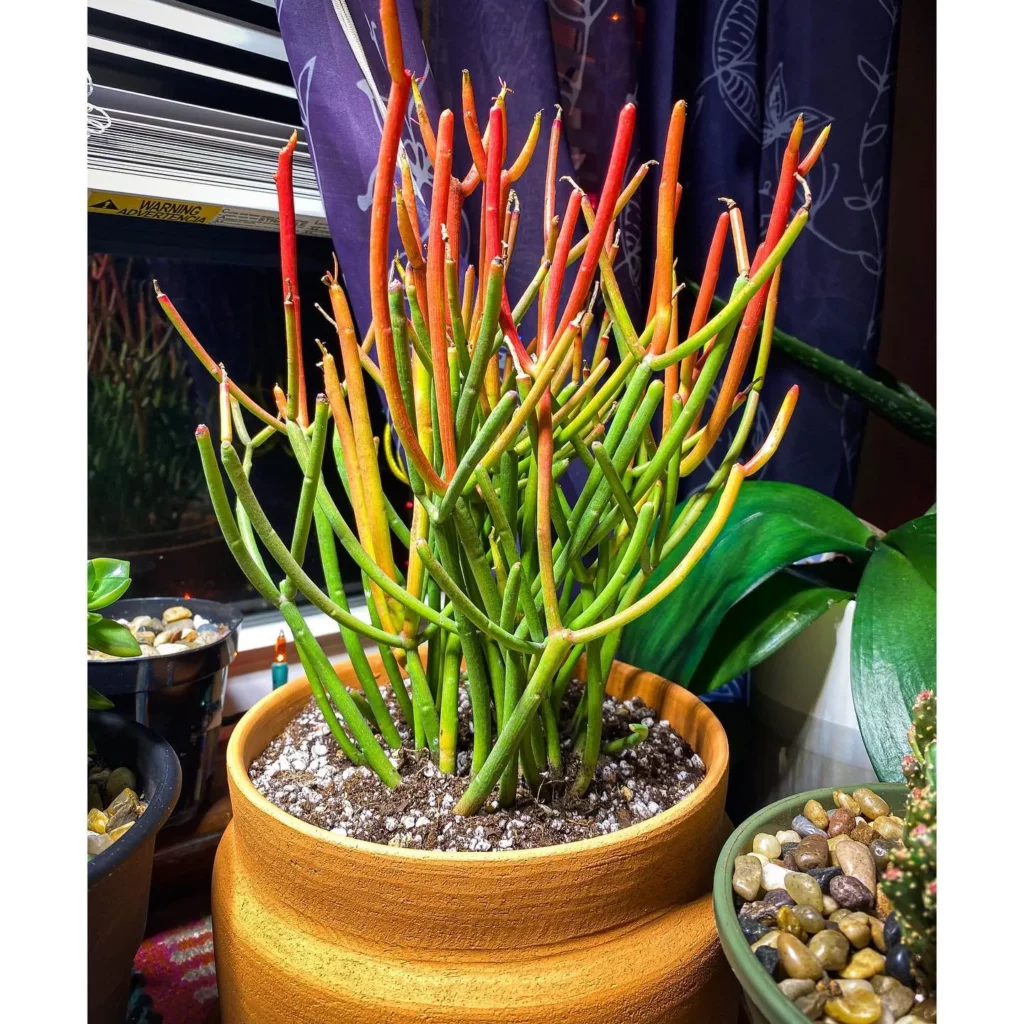
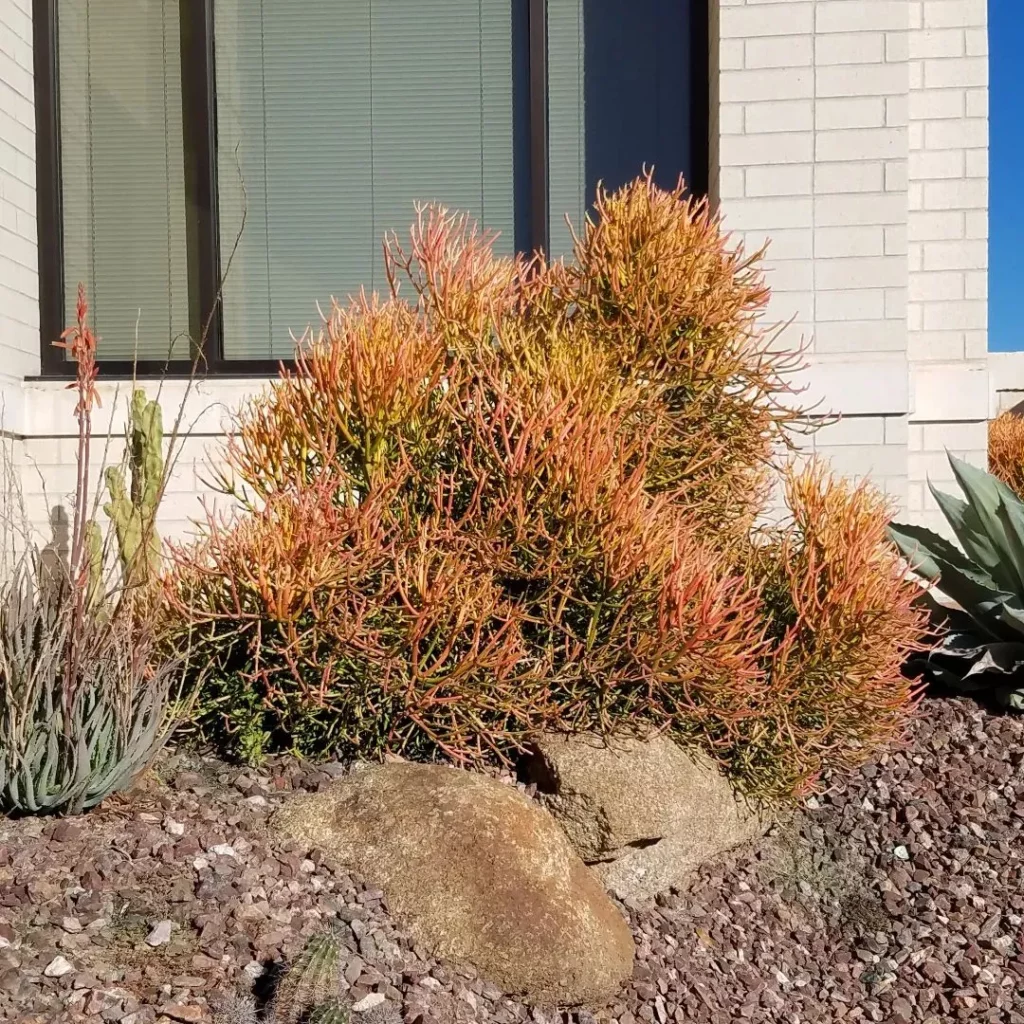
In addition to its fiery branches, the Sticks of Fire plant can produce small yellow clusters of flowers. These colorful blooms attract butterflies, bees, and other pollinators, adding a touch of life and movement to the plant. However, it’s important to note that the primary focus of this plant’s beauty lies in its vibrant branches, making it an excellent choice for those seeking a unique and visually appealing succulent.
The leaves of the Sticks of Fire plant are small and quickly fall off, leaving behind bare stick-like branches. This minimalist appearance adds to the plant’s overall charm, making it a favorite among succulent enthusiasts. Whether displayed indoors or outdoors, the Sticks of Fire plant is sure to captivate with its stunning and fiery appearance.
Light Requirements for Sticks of Fire
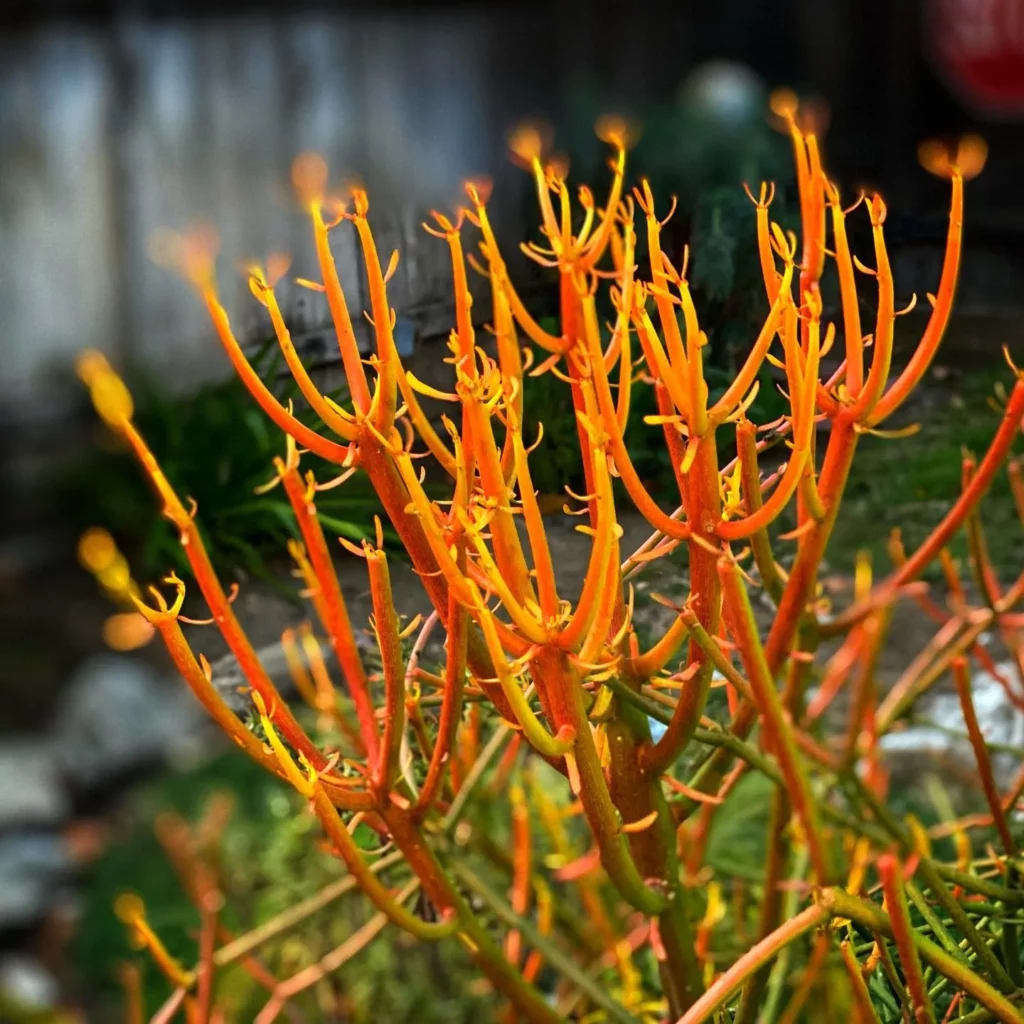
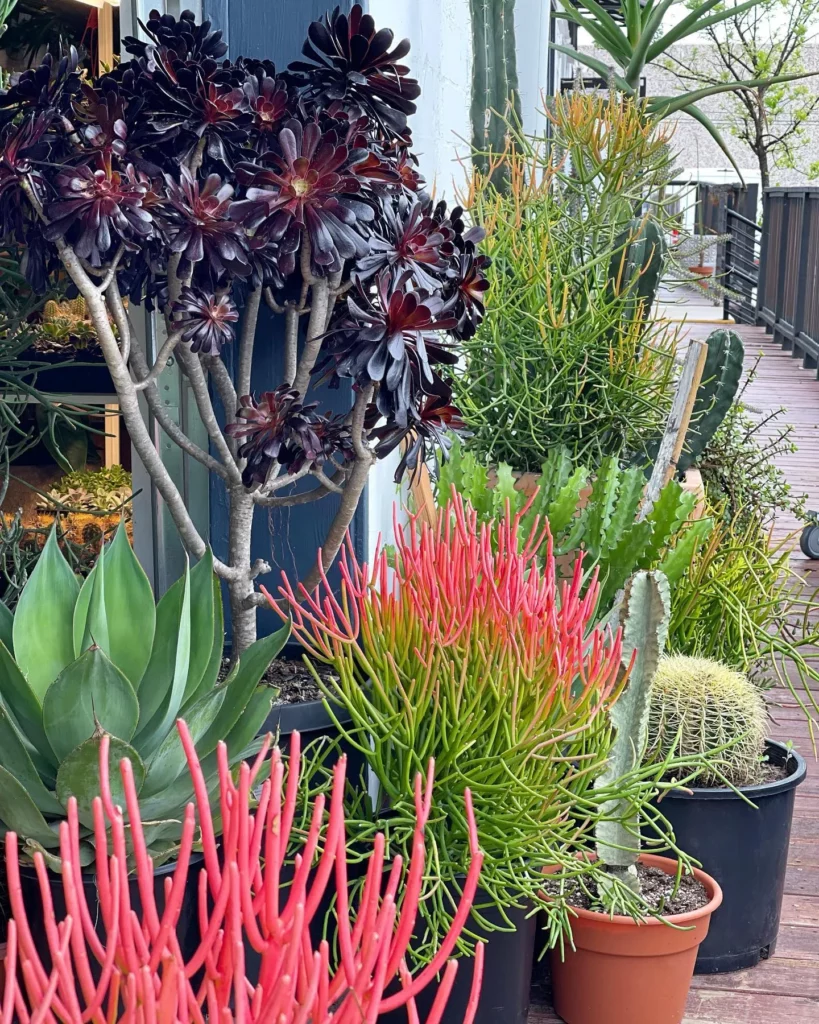
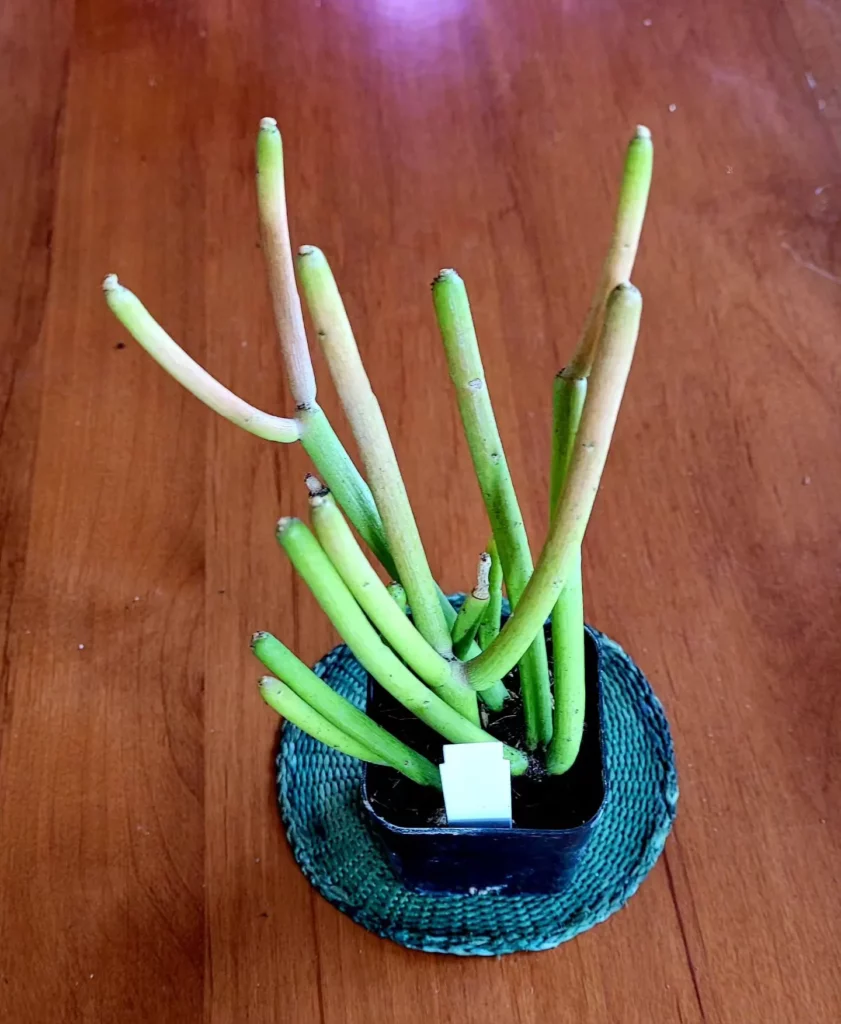
Proper lighting is crucial for the healthy growth of Sticks of Fire plants. These succulents require full sun or bright light indoors to thrive. It’s best to place them in a location that receives at least 8 hours of sunlight per day. A south-facing window is ideal for indoor plants as it provides ample direct sunlight. However, east or west-facing windows that receive indirect sunlight can also work. If your Sticks of Fire plant is not getting enough natural sunlight, you can use supplemental grow lights to provide the necessary light.
When using grow lights, it’s important to position them about 12 inches above the plants and keep them on for approximately 12-14 hours a day. This will mimic natural sunlight and ensure that your Sticks of Fire plant receives the light it needs for photosynthesis and growth. If you notice the branches of your plant stretching or elongating, it may be an indication that it’s not getting enough light, and you should consider increasing the light intensity or duration.
Signs of Inadequate Light:
- Long, stretched out branches
- Pale or faded coloration
- Slow or stunted growth
- Leaning or bending towards the light source
Signs of Excessive Light:
- Burnt or scorched leaves
- Bleached or discolored patches on the branches
- Drooping or wilting foliage
Watering Sticks of Fire
Proper watering is crucial for the health and well-being of your Sticks of Fire plant. Here are some essential tips to help you water your plant effectively:
- Allow soil to dry: Sticks of Fire plants prefer dry soil conditions, so it’s important to let the soil dry out completely between waterings. This will help prevent overwatering and root rot.
- Check moisture levels: Before watering, check the moisture levels by inserting your finger about an inch into the soil. If it feels dry, it’s time to water. If it’s still moist, wait a few more days before watering.
- Thoroughly soak the soil: When watering, make sure to thoroughly soak the soil until water drains out of the bottom of the pot. This ensures that the roots receive adequate moisture without creating waterlogged conditions.
- Discard excess water: After watering, make sure to discard any excess water that collects in the saucer or tray beneath the pot. Leaving the plant in standing water can lead to root rot and other issues.
Fertilizing Sticks of Fire
Fertilizing the Sticks of Fire plant is an important aspect of its care. While it doesn’t require frequent feeding, occasional fertilization can promote healthy growth and vibrant colors. Here are some key points to keep in mind when fertilizing your Sticks of Fire:
1. Choose the right fertilizer:
When selecting a fertilizer for your Sticks of Fire plant, opt for a general-purpose plant food. Look for a balanced formula with equal amounts of nitrogen, phosphorus, and potassium (N-P-K) to provide the necessary nutrients. Alternatively, you can use organic options such as compost tea or granules for a natural approach.
2. Apply during the growing season:
It’s best to fertilize your Sticks of Fire plant during the spring and summer months when it is actively growing. Follow the instructions on the packaging to determine the appropriate amount and frequency of application. Avoid fertilizing during the fall and winter as the plant enters a dormant phase.
3. Use a diluted solution:
When fertilizing, it’s important to dilute the fertilizer according to the manufacturer’s instructions. Applying a concentrated solution can lead to burning and damage the plant. Start with a lower concentration and gradually increase if needed, observing the plant’s response.
Potting Sticks of Fire
When it comes to potting your Sticks of Fire plant, it’s important to create the right environment that promotes healthy growth. This succulent thrives in fast-draining soil, so using a commercial succulent mix is a good starting point. However, to enhance the porosity and drainage, it’s recommended to amend the mix with perlite or pumice.
If you prefer a homemade soil mix, combine 2 parts potting soil, 1 part perlite or pumice, and 1 part coarse sand. This mixture will provide the ideal balance of water retention and drainage. Remember, Sticks of Fire plants don’t like to have wet feet, so proper soil composition is crucial.
Young Sticks of Fire plants may require repotting annually or every 2-3 years, depending on their growth rate. When repotting, choose a container that is 2-3″ wider and deeper than the current one to allow for root expansion. It’s essential to ensure that the pot has proper drainage holes to prevent water from sitting at the bottom.
Key Points:
- Use a fast-draining soil mix, such as a commercial succulent mix amended with perlite or pumice.
- Create a homemade soil mix by combining potting soil, perlite or pumice, and coarse sand.
- Repot young Sticks of Fire plants annually or every 2-3 years into a slightly larger container with proper drainage holes.
Propagation of Sticks of Fire
One of the great things about Sticks of Fire plants is that they can be easily propagated through stem cuttings. To propagate your plant, start by selecting a healthy branch and making a clean cut using sharp, sterilized pruning shears. Allow the cutting to callus for a few days, which helps to prevent the flow of the plant’s milky sap.
After the cutting has callused, dust the end with rooting hormone to encourage root development. Then, plant the cutting in a well-draining soilless or well-draining mixture. It’s important to keep the cutting in low light conditions and barely moist soil for the next few weeks. This will create the optimal environment for the cutting to develop new roots.
Tips for Successful Propagation:
- Choose healthy branches for your cuttings
- Allow the cuttings to callus before planting
- Dust the cut ends with rooting hormone
- Use a well-draining soil mixture
- Keep the cuttings in low light and barely moist conditions
Another method of propagating Sticks of Fire is through seed, although this is less common. If you choose to propagate by seed, it’s important to know that the germination process can be slow and requires patience. Start by collecting mature seeds from your plant and sow them in a well-draining soil mixture. Keep the soil lightly moist and provide warmth and consistent light for optimal germination.
Growth and Development of Sticks of Fire
The Sticks of Fire plant is known for its fast growth and vibrant appearance. With the proper care, this succulent can reach a height of up to 30 feet when grown outdoors, making it a striking addition to any garden. Even when grown indoors, Sticks of Fire plants can still reach a height of 6 to 8 feet, creating a stunning focal point in your space.
The growth of Sticks of Fire plants is primarily focused on the development of their colorful branches. These thin, stick-like branches can turn bright red or orange, adding a fiery touch to your indoor or outdoor area. As the plant matures, the base of the trunk becomes woody and develops a beautiful bark-like texture, adding to its unique appearance.
Factors Affecting Growth
- Light: Adequate light is crucial for the healthy growth of Sticks of Fire plants. They thrive in full sun or bright light conditions, both outdoors and indoors. Ensuring they receive at least 8 hours of sunlight per day or providing supplemental grow lights can help promote optimal growth.
- Watering: Sticks of Fire plants are drought-tolerant and prefer to dry out between waterings. Overwatering can lead to root rot, so it’s important to allow the soil to completely dry out before watering again. A general guideline is to water the plant when the top 2 inches of soil are dry.
- Soil: These succulents require well-draining soil to prevent waterlogging and root rot. A commercial succulent mix amended with perlite or pumice can provide the ideal growing medium. Homemade mixtures combining potting soil, perlite or pumice, and coarse sand can also be used.
- Fertilizing: Sticks of Fire plants do not require frequent fertilization but occasional feeding during the spring and summer months can promote growth. A general-purpose plant food or organic alternatives such as compost tea or granules can be used.
Pests and Diseases of Sticks of Fire
While the Sticks of Fire plant is generally resistant to pests and diseases, it may occasionally encounter some common issues. Here are some pests and diseases to watch out for:
Pests:
- Mealybugs: These tiny white insects can often be found in the nooks and crannies of the plant. They feed on the sap and can cause wilting and yellowing of the foliage. To treat mealybugs, gently wipe them off with a cotton swab dipped in rubbing alcohol or spray the plant with an organic insecticidal soap.
- Aphids: Aphids are small, soft-bodied insects that can cluster on the stems and leaves of the Sticks of Fire plant. They suck the sap from the plant, causing stunted growth and distorted leaves. A strong stream of water or a soapy water solution can help control aphids.
- Spider Mites: These tiny pests can be identified by the fine webbing they create on the plant. They feed on the sap, leading to the yellowing and drying out of the foliage. Regularly misting the plant with water can help prevent spider mite infestations.
Diseases:
- Root Rot: Overwatering or poorly drained soil can lead to root rot, which is a fungal infection that affects the roots. To prevent root rot, make sure the soil is well-draining and allow it to dry out between waterings.
- Leaf Spot: Leaf spot is a common fungal disease that causes dark spots or lesions on the leaves. It is often caused by overwatering or high humidity. To prevent leaf spot, avoid getting the foliage wet and ensure good air circulation around the plant.
Conclusion
Remember to provide your Sticks of Fire plant with adequate light, whether it’s through a sunny window or supplemental grow lights. Additionally, be mindful of its watering needs, allowing the soil to dry completely between waterings to prevent overwatering.
Proper potting in a fast-draining soil mix and occasional fertilization during the growing season will support the growth and development of your Sticks of Fire plant. Keep an eye out for any potential pest or disease issues and take swift action to maintain the plant’s health.
Lastly, always handle the plant with caution due to its toxic nature and the milky white sap that can irritate the skin and eyes. With the right care and attention, your Sticks of Fire plant will continue to thrive and bring beauty to your indoor or outdoor space.
FAQ
Is the Sticks of Fire plant toxic?
Yes, the Sticks of Fire plant is toxic to humans and animals. Its milky white sap can irritate the skin and eyes.
What does the Sticks of Fire plant look like?
The Sticks of Fire plant has thin branches that resemble pencils and turn bright red or orange in color. It has small leaves that quickly fall off, leaving behind bare stick-like branches.
How much sunlight does the Sticks of Fire plant need?
The Sticks of Fire plant requires full sun or bright light indoors. It is best to place it in a location that receives at least 8 hours of sunlight per day.
How often should I water the Sticks of Fire plant?
The Sticks of Fire plant should be watered when the soil is dry. It is important to allow the soil to dry completely between waterings to avoid overwatering.
Does the Sticks of Fire plant need fertilizer?
The Sticks of Fire plant does not require frequent fertilization, but occasional feeding can promote growth. A general-purpose plant food can be used during the spring and summer months.
What type of soil is best for the Sticks of Fire plant?
The Sticks of Fire plant thrives in fast-draining soil. A commercial succulent mix can be used, but it is recommended to amend it with perlite or pumice to increase porosity and drainage.
How can I propagate the Sticks of Fire plant?
The Sticks of Fire plant can be easily propagated through stem cuttings. Healthy branches can be cut and allowed to callus before planting in well-draining soilless or well-draining mixture.
How fast does the Sticks of Fire plant grow?
The Sticks of Fire plant is a fast-growing succulent, especially when provided with the proper care. It can reach a height of up to 30′ outdoors, but most indoor specimens grow to a height of 6-8′.
What pests and diseases can affect the Sticks of Fire plant?
The Sticks of Fire plant is generally resistant to pests and diseases, but it can occasionally be affected by mealybugs, aphids, and spider mites. These pests can be treated with water or organic insecticidal sprays.
How do I care for the Sticks of Fire plant?
To care for the Sticks of Fire plant, provide it with adequate light, water it when the soil is dry, use well-draining soil, fertilize occasionally, and address any pest or disease issues promptly.

